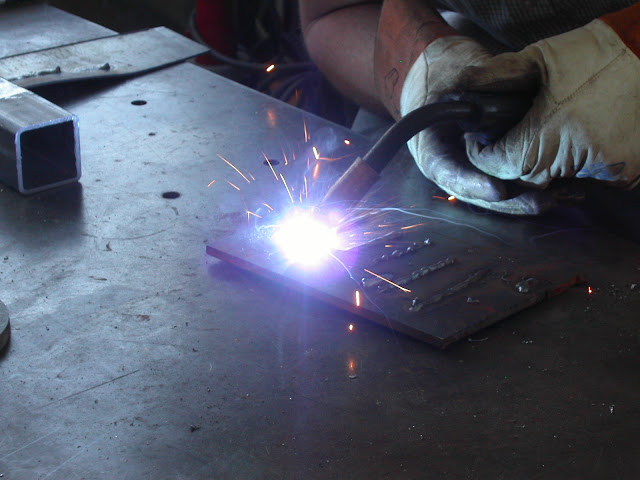Welders! how do they work? Part 1
Hi there! I´m back for another post! Today we are going to talk about welders. The reason for this is that I resently learned to weld with an old crappy stick welder. Due to the need for good and precise welds for my projects, I purchased a MIG welder. This made me wonder: how does this gizmo work?
Welding is a complicated subject, so in this article I will expalin the basic types of welders and how welding works.
Welding consists of fusing two materials, usually metals or thermoplastics together, to the point were they are securely joined together, making a strong joint. There are many ways of joining materials, especially metals, but the most common type is called arc welding. There are three main types of arc welders:
The first is called shielded metal arc welding, also known as stick welding, and consists of an arc welder which creates a weld via consumable electrodes. These electrodes are metallic sticks which are covered by a "flux". The flux is a special material which makes the rod more conductive and helps create the weld. This is mainly used for heavy-duty equipment like ships and outdoor welding.
Welding is a complicated subject, so in this article I will expalin the basic types of welders and how welding works.
Welding consists of fusing two materials, usually metals or thermoplastics together, to the point were they are securely joined together, making a strong joint. There are many ways of joining materials, especially metals, but the most common type is called arc welding. There are three main types of arc welders:
The first is called shielded metal arc welding, also known as stick welding, and consists of an arc welder which creates a weld via consumable electrodes. These electrodes are metallic sticks which are covered by a "flux". The flux is a special material which makes the rod more conductive and helps create the weld. This is mainly used for heavy-duty equipment like ships and outdoor welding.
Stick welding
The second is called gas tungsten arc welding, also known as TIG welding, and consists of a special electrode made of tungsten which is in a pistol shape grip. This tungsten only starts to melt and create the weld, but it is not consumed. After the arc has started, a consumable filler metal is used to fuse the materials together. To protect the weld from the atmosphere, which hinders the quality of the weld, a noble gas is used to protect the weld. This is a very precise form of welding which is commnly used for stainless steel, aluminium, magnesium and copper.
TIG welding
And finally, we have gas metal arc welding. Also known as MIG welding, the machine consists of a pistol which shoots a long thin and continuous wire(electrode). This wire is inside the welder itself, where a spool of filament is fed through a mechanism and then through the gun. There are versions which require argon or helium to work, while others have a special filament with a flux which don´t require any gas.
MIG welding
There are many variants of each of the ones I´ve talked about here, but the fundamentals are very similar. I will upload another post where I will talk more in depth on how these incredible machines work.
I hope you enjoyed this post! I also hope that you start welding too! It is surprisingly relaxing and fun! If you have any questions, feel free to ask them in the comments below.
Ciao for now!





Comments
Post a Comment